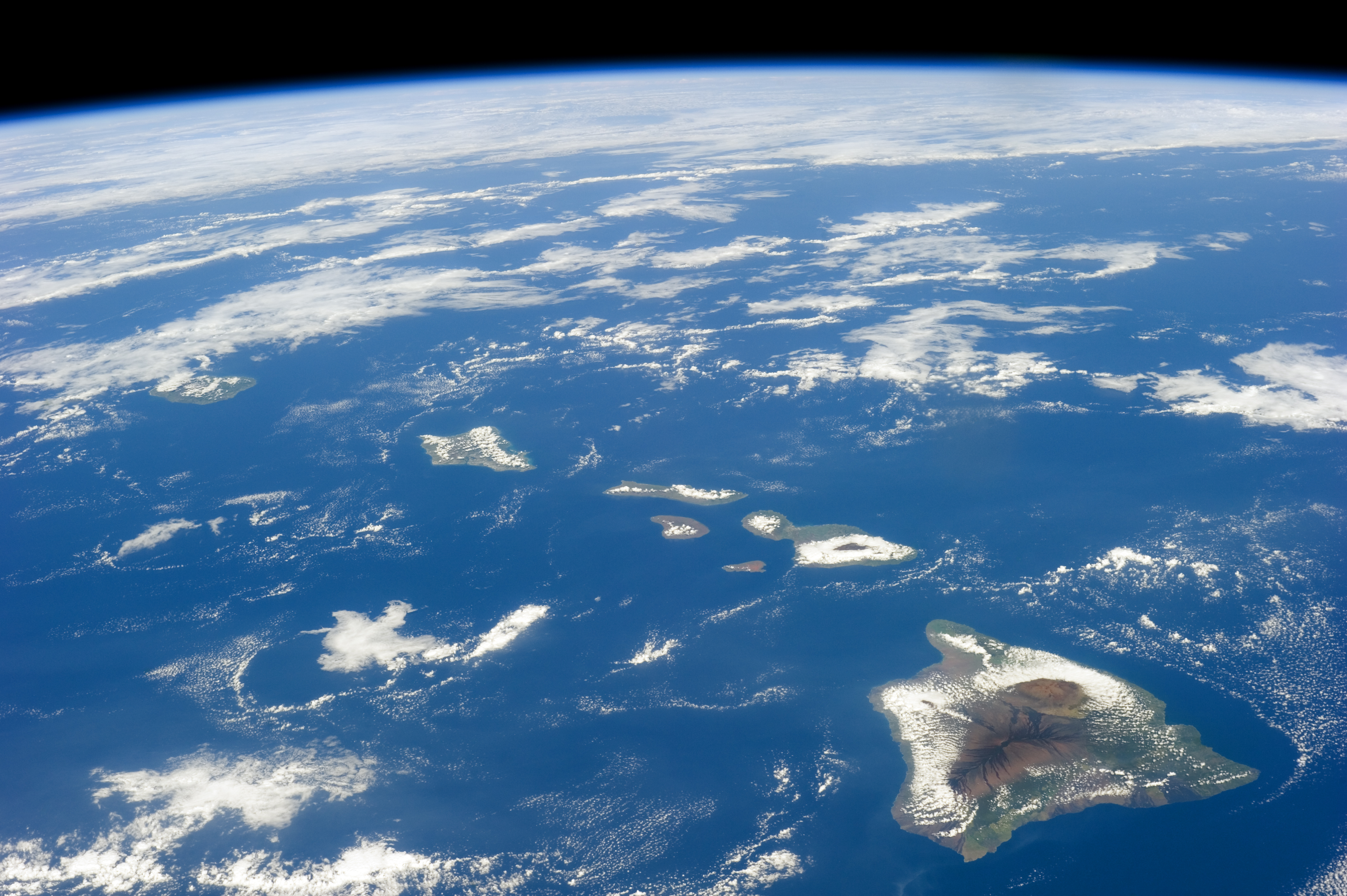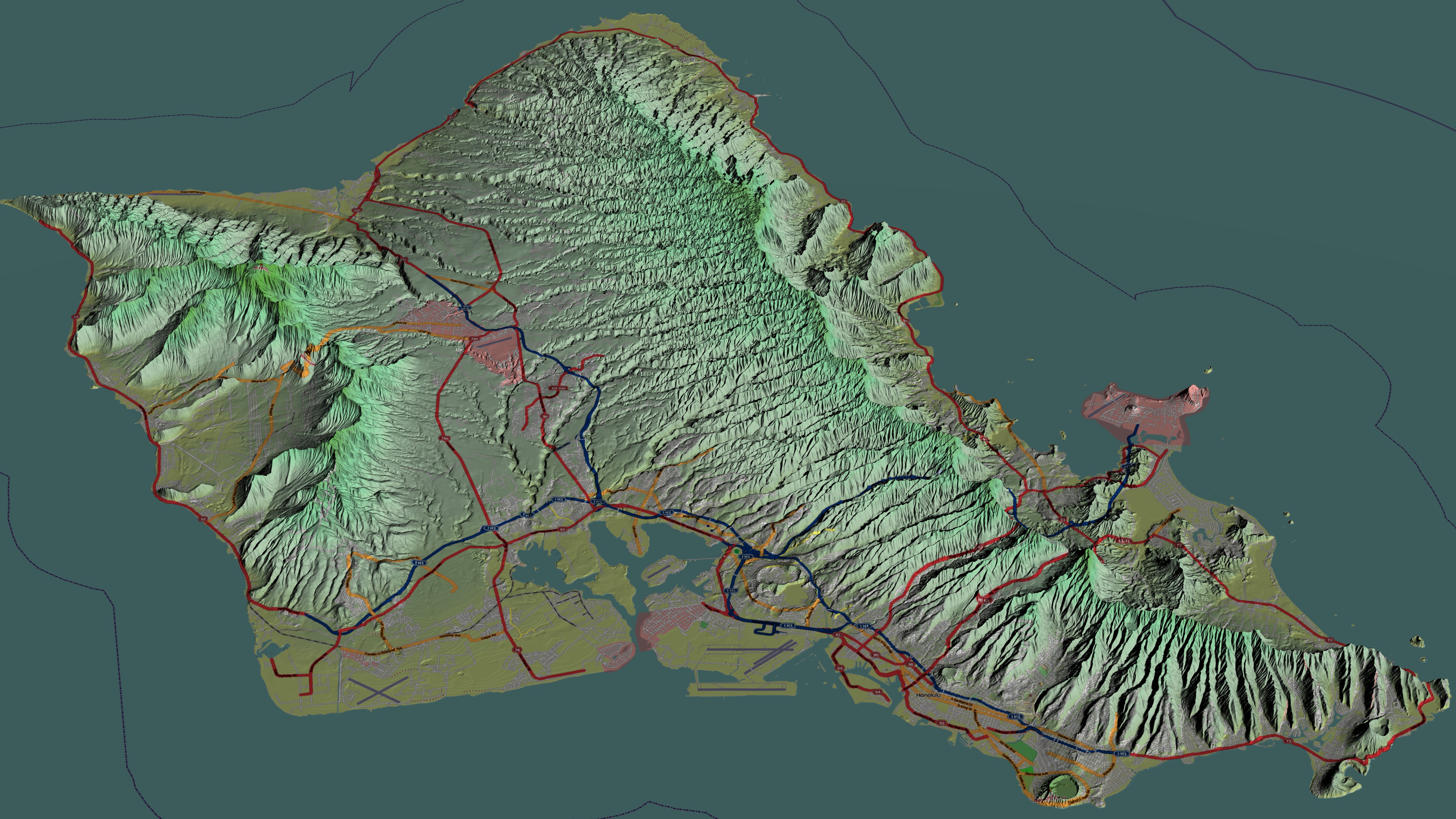|
Moa-nalo
The moa-nalo are a group of extinct aberrant, goose-like ducks that lived on the larger Hawaiian Islands, except Hawaii itself, in the Pacific. They were the major herbivores on most of these islands until they became extinct after human settlement. Description The moa-nalo (the name literally means "lost fowl"; the plural and the singular are the same) were unknown to science, having been wiped out before the arrival of James Cook (1778), until the early 1980s, when their subfossil remains were discovered in sand dunes on the islands of Molokai and Kauai. Subsequently, bones were found on Maui, Oahu, and Lānai, in lava tubes, lake beds, and sinkholes. They represent four species in three genera so far: * ''Chelychelynechen quassus'' ( turtle-jawed moa-nalo) from Kauai * ''Ptaiochen pau'' ( small-billed moa-nalo) from Maui * ''Thambetochen xanion'' ( O'ahu moa-nalo) from Oahu * ''Thambetochen chauliodous'' ( Maui Nui large-billed moa-nalo) from Maui, Lānai and Molokai ( ... [...More Info...] [...Related Items...] OR: [Wikipedia] [Google] [Baidu] |
Ptaiochen Pau
The small-billed moa-nalo (''Ptaiochen pau''), also known as the stumbling moa-nalo, is a species of moa-nalo, one of a group of extinct, flightless, large goose-like ducks, which evolved in the Hawaiian Islands of the North Pacific Ocean. It was described in 1991 from subfossil material collected in September 1982 by Storrs Olson, Helen James and others, from the Auwahi Cave on the southern slopes of Haleakalā, on the island of Maui. Etymology The generic name ''Ptaiochen'' links the Greek ' (“stumble”), with ''chen'' (“goose”), alluding to a fancied propensity of the species to fall into holes (thereby becoming part of the fossil record). The specific epithet is from the Hawaiian ''pau'' (“finished” or “destroyed”), referring to its extinction. Description The species was similar to moa-nalo in the genus '' Thambetochen'' in having bony, tooth-like projections on the jaws. However, it differed in other aspects of skull morphology, such as in having a proport ... [...More Info...] [...Related Items...] OR: [Wikipedia] [Google] [Baidu] |
Maui Nui Large-billed Moa-nalo
The Maui Nui large-billed moa-nalo (''Thambetochen chauliodous''), also known as the Maui Nui moa-nalo, is one of two species of moa-nalo in the genus '' Thambetochen''. Moa-nalo are a group of extinct, flightless, large goose-like ducks, which evolved in the Hawaiian Islands of the North Pacific Ocean. Distribution and habitat The genus and species were originally described in 1976 from subfossil material collected from the Moomomi Dunes, on the island of Molokai. Remains of the bird have also been recovered from Ilio Point on Molokai as well as from lava tubes on the southern slopes of the volcanic mountain of Haleakalā on the nearby island of Maui. Both Molokai and Maui are parts of what used to be the much larger prehistoric island of Maui Nui, to which the species appears to have been endemic. The bird evidently shared the island with another moa-nalo—the smaller small-billed moa-nalo The small-billed moa-nalo (''Ptaiochen pau''), also known as the stumbling moa-nalo ... [...More Info...] [...Related Items...] OR: [Wikipedia] [Google] [Baidu] |
Turtle-jawed Moa-nalo
The turtle-jawed moa-nalo (''Chelychelynechen quassus''), also formerly referred to as the large Kauai goose, is a species of moa-nalo, one of a group of extinct, flightless, large goose-like ducks, which evolved in the Hawaiian Islands of the North Pacific Ocean. It was described in 1991 from subfossil material collected in 1976 by Storrs Olson from the calcareous Makawehi dunes on the south-eastern coast of the island of Kauai. Its remains have also been found at the nearby Makauwahi Cave site. Taxonomy The generic name ''Chelychelynechen'' comes from the Greek ''chelys'' (“turtle”), ''chelyne'' (“lip” or “jaw”), with ''chen'' (“goose”), referring to the distinctly turtle-like appearance and structure of the beak. The specific epithet is from the Latin ''quassus'' (“broken” or “shattered”), alluding to the fragmentary condition of the type material. Description Apart from the head, the bird was similar to other moa-nalo species, with robust legs an ... [...More Info...] [...Related Items...] OR: [Wikipedia] [Google] [Baidu] |
Thambetochen
Thambetochen is an extinct genus of moa-nalo duck. It contains two species, the Maui Nui moa-nalo (''T. chauliodous'') and the smaller O'ahu moa-nalo (''T. xanion''). The former was found on Maui and Molokai on Hawaii, the latter was found on Oahu. These birds were large, flightless ducks, with robust legs but small wings, which had evolved in isolation, on islands without terrestrial mammals. Their beaks had tooth-like lamellae and their diet was plants which they digested through hindgut fermentation. These birds were likely driven to extinction when the islands were colonised by Polynesians Polynesians form an ethnolinguistic group of closely related people who are native to Polynesia (islands in the Polynesian Triangle), an expansive region of Oceania in the Pacific Ocean. They trace their early prehistoric origins to Island Sou .... References {{Taxonbar, from=Q7709821 Anatidae Holocene extinctions Extinct flightless birds Extinct birds of Hawaii L ... [...More Info...] [...Related Items...] OR: [Wikipedia] [Google] [Baidu] |
Maui
The island of Maui (; Hawaiian: ) is the second-largest of the islands of the state of Hawaii at 727.2 square miles (1,883 km2) and is the 17th largest island in the United States. Maui is the largest of Maui County's four islands, which also includes Molokai, Lānai, and unpopulated Kahoolawe. In 2020, Maui had a population of 168,307, the third-highest of the Hawaiian Islands, behind that of Oahu and Hawaii Island. Kahului is the largest census-designated place (CDP) on the island with a population of 26,337 , and is the commercial and financial hub of the island. Wailuku is the seat of Maui County and is the third-largest CDP . Other significant places include Kīhei (including Wailea and Makena in the Kihei Town CDP, the island's second-most-populated CDP), Lāhainā (including Kāanapali and Kapalua in the Lāhainā Town CDP), Makawao, Pukalani, Pāia, Kula, Haikū, and Hāna. Etymology Native Hawaiian tradition gives the origin of the island's na ... [...More Info...] [...Related Items...] OR: [Wikipedia] [Google] [Baidu] |
Holocene
The Holocene ( ) is the current geological epoch. It began approximately 11,650 cal years Before Present (), after the Last Glacial Period, which concluded with the Holocene glacial retreat. The Holocene and the preceding Pleistocene together form the Quaternary period. The Holocene has been identified with the current warm period, known as MIS 1. It is considered by some to be an interglacial period within the Pleistocene Epoch, called the Flandrian interglacial.Oxford University Press – Why Geography Matters: More Than Ever (book) – "Holocene Humanity" section https://books.google.com/books?id=7P0_sWIcBNsC The Holocene corresponds with the rapid proliferation, growth and impacts of the human species worldwide, including all of its written history, technological revolutions, development of major civilizations, and overall significant transition towards urban living in the present. The human impact on modern-era Earth and its ecosystems may be considered of global ... [...More Info...] [...Related Items...] OR: [Wikipedia] [Google] [Baidu] |
Tortoise
Tortoises () are reptiles of the family Testudinidae of the order Testudines (Latin: ''tortoise''). Like other turtles, tortoises have a shell to protect from predation and other threats. The shell in tortoises is generally hard, and like other members of the suborder Cryptodira, they retract their necks and heads directly backward into the shell to protect them. Tortoises can vary in size with some species, such as the Galápagos giant tortoise, growing to more than in length, whereas others like the Speckled cape tortoise have shells that measure only long. Several lineages of tortoises have independently evolved very large body sizes in excess of 100 kg, including the Galapagos giant tortoise and the Aldabra giant tortoise. They are usually diurnal animals with tendencies to be crepuscular depending on the ambient temperatures. They are generally reclusive animals. Tortoises are the longest-living land animals in the world, although the longest-living specie ... [...More Info...] [...Related Items...] OR: [Wikipedia] [Google] [Baidu] |
Maui Nui
Maui Nui or Greater Maui, is a modern geologists' name given to a prehistoric Hawaiian Island built from seven shield volcanoes. ''Nui'' means "great/large" in the Hawaiian language. 1.2 million years ago, Maui Nui was , 40% larger than the present-day island of Hawaii. Sea levels were lower than today's, due to distant glaciation locking up the Earth's water during ice ages, thus exposing more land. As the volcanoes slowly settled by subsidence, due to the weight of the shield volcanoes and erosion, the saddles between them slowly flooded, forming four islands: Maui, Molokai, Lānai, and Kahoolawe by about 200,000 years ago. Another former volcanic island lying west of Molokai was completely submerged, and covered with a cap of coral; it is now known as Penguin Bank. The sea floor between these four islands is relatively shallow, about deep, and all of the islands except Kahoolawe were joined during the low sea levels of the last glacial maximum, about 20,000 years ago. B ... [...More Info...] [...Related Items...] OR: [Wikipedia] [Google] [Baidu] |
O'ahu Moa-nalo
Oahu () ( Hawaiian: ''Oʻahu'' ()), also known as "The Gathering Place", is the third-largest of the Hawaiian Islands. It is home to roughly one million people—over two-thirds of the population of the U.S. state of Hawaii. The island of O’ahu and the Northwestern Hawaiian Islands constitute the City and County of Honolulu. The state capital, Honolulu, is on Oʻahu's southeast coast. Oʻahu had a population of 1,016,508 according to the 2020 U.S. Census, up from 953,207 people in 2010 (approximately 70% of the total 1,455,271 population of the State of Hawaii, with approximately 81% of those living in or near the Honolulu urban area). Name The Island of O{{okinaahu in Hawaii is often nicknamed (or translated as) ''"The Gathering Place"''. It appears that O{{okinaahu grew into this nickname; it is currently the most populated Hawaiian Island, however, in ancient times, O{{okinaahu was not populous and was outranked by the status of other islands. The translation of ''"gath ... [...More Info...] [...Related Items...] OR: [Wikipedia] [Google] [Baidu] |
Genus
Genus ( plural genera ) is a taxonomic rank used in the biological classification of living and fossil organisms as well as viruses. In the hierarchy of biological classification, genus comes above species and below family. In binomial nomenclature, the genus name forms the first part of the binomial species name for each species within the genus. :E.g. '' Panthera leo'' (lion) and '' Panthera onca'' (jaguar) are two species within the genus ''Panthera''. ''Panthera'' is a genus within the family Felidae. The composition of a genus is determined by taxonomists. The standards for genus classification are not strictly codified, so different authorities often produce different classifications for genera. There are some general practices used, however, including the idea that a newly defined genus should fulfill these three criteria to be descriptively useful: # monophyly – all descendants of an ancestral taxon are grouped together (i.e. phylogenetic analysis should c ... [...More Info...] [...Related Items...] OR: [Wikipedia] [Google] [Baidu] |
Species
In biology, a species is the basic unit of Taxonomy (biology), classification and a taxonomic rank of an organism, as well as a unit of biodiversity. A species is often defined as the largest group of organisms in which any two individuals of the appropriate sexes or mating types can reproduction, produce Fertility, fertile offspring, typically by sexual reproduction. Other ways of defining species include their karyotype, DNA sequence, morphology (biology), morphology, behaviour or ecological niche. In addition, paleontologists use the concept of the chronospecies since fossil reproduction cannot be examined. The most recent rigorous estimate for the total number of species of eukaryotes is between 8 and 8.7 million. However, only about 14% of these had been described by 2011. All species (except viruses) are given a binomial nomenclature, two-part name, a "binomial". The first part of a binomial is the genus to which the species belongs. The second part is called the specifi ... [...More Info...] [...Related Items...] OR: [Wikipedia] [Google] [Baidu] |
.jpg)







